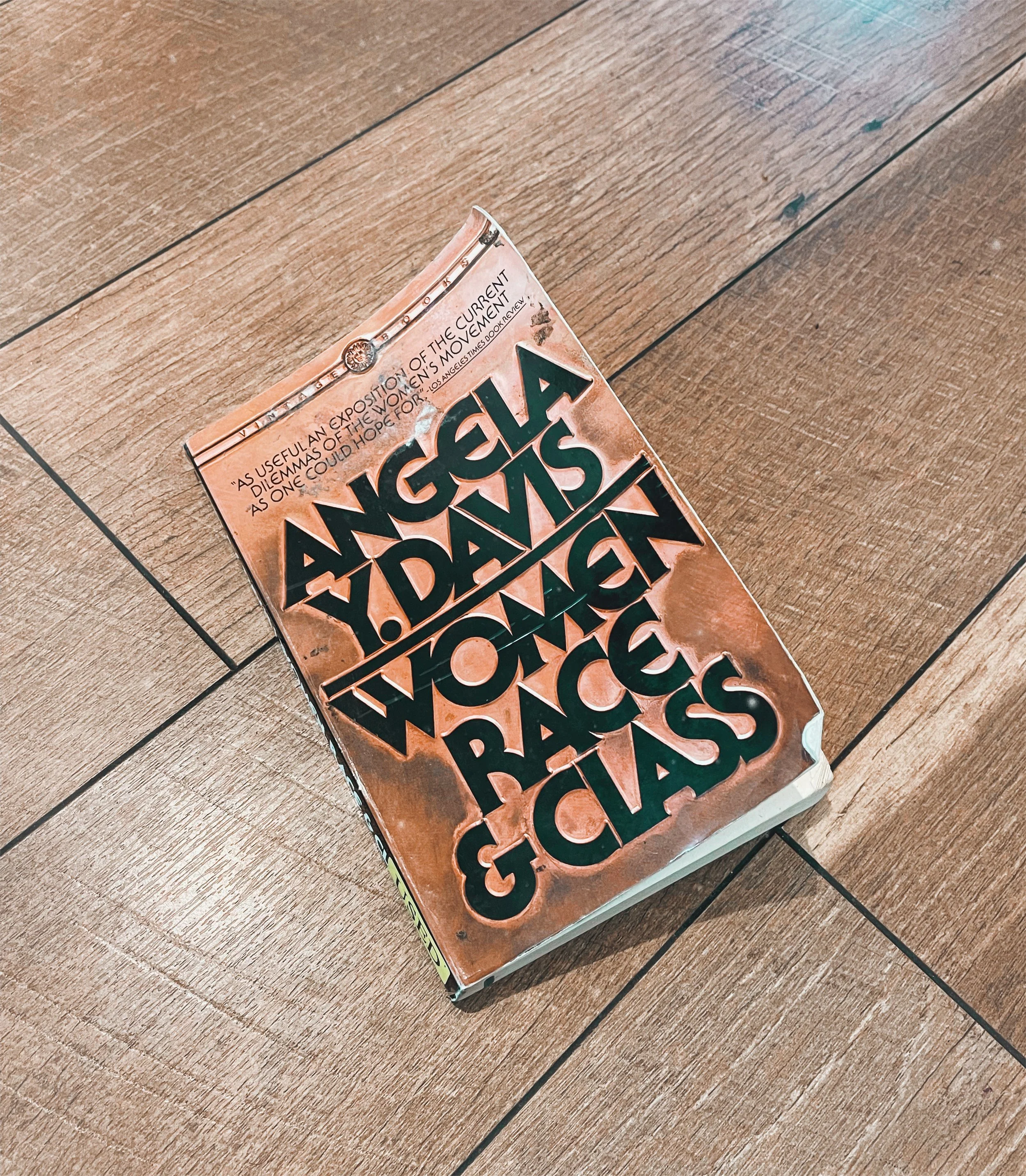Book Review 02: Women, Race, and Class by Angela Davis
The experience of reading this book, roughly 40 years after its publication in 1981, and roughly 18 years after first learning about slavery and the women’s suffrage movement in the whitewashed public school system of central Virginia, was like rewatching an old movie only to find it was not what you remembered it to be. Angela Davis, an iconic revolutionary feminist and political activist of the late twentieth century onward, poignantly details a history of America that too often goes untold, or worse, criminally unlearned.
“Women, Race, and Class” was at times eye opening, at others a brutal reminder. It is a testament to how divided the women’s suffrage movement was during the early twentieth century, particularly in relation to race, sex, and class, respectively. Davis’ account of the white feminist movements segregation and outright exclusion of Black women’s voices illuminates the flawed belief that a fight for liberation can “ask too much” by being intersectional and inclusive. In fact, Davis argues that liberation cannot truly be fought for under a lack of intersectionality, and potentially also under the rule of monopoly capitalism.
Just as “[men’s] sexist attitudes prevented them from grasping the vast potential of women’s involvement in the anti-slavery movement,”(37) white women’s racist attitudes prevented them from grasping the vast potential of Black and African American involvement in the women’s suffrage movement. This was one of the points continually driven home by Davis’ countless historical examples of prejudice, racism, sexism, and classism, all of which perpetuated separation, disenfranchisement, and mutual disadvantage to respective parties.
As a non-fiction, documented study of the struggles that have long pervaded the “good fight” in any sense of the phrase, Angela Davis contributes an analysis of American history that everyone should have the experience of reading, especially those with the power, privilege, or social status to help change the future for the better, without being doomed to repeat history.
In terms of the reading experience, I would compare Davis’ subject matter and voice to Audre Lorde, Bell Hooks, and maybe also Alice Walker.
Here are 11 quotes from “Women, Race, & Class” that I found particularly important, insightful, eye-opening, provocative, etc. :
“Required by the master’s demands to be as ‘masculine’ in the performance of their work as their men, Black women must have been profoundly affected by their experiences during slavery. Some, no doubt, were broken and destroyed, yet the majority survived and, in the process, acquired qualities considered taboo by the nineteenth-century ideology of womanhood.”(11)
“Throughout the Civil War, Harriet Tubman continued her relentless opposition to slavery, and even today she still holds the distinction of being the only woman in the United States ever to have led troops into battle.”(23)
“Most men of his era, finding their manhood impugned, would have automatically risen to defend their masculinity. But Frederick Douglass assumed an admirably anti-sexist posture and proclaimed that he hardly felt demeaned by the label ‘women’s rights man’".” (30)
“Yet the incipient industrialization of the economy was simultaneously eroding women’s prestige in the home— a prestige based on their previously productive and essential domestic labor. An ideological consequence of industrial capitalism was the shaping of a more rigorous notion of female inferiority.”(32)
“The early feminists may well have described marriage as ‘slavery’ of the same sort Black people suffered primarily for the shock value of comparison…They seem to have ignored, however, the fact that their identification of the two institutions also implied that slavery was really no worse than marriage.”(34)
“The emphatic focus of the Seneca Falls Declaration was the institution of marriage and its many injurious effects on women: marriage robbed women of their property rights, making wives economically--as well as morally--dependent on their husbands.”(53)
“Angelina Grimke characteristically proposed the most advanced interpretation of the war she described as ‘our second revolution’: ‘the war is not, as the South falsely pretends, a war of races, nor of sections, nor of political parties, but a war of Principles, a war upon the working classes, whether white or black…In this war, the black man was the first victim…The nation is in a death-struggle. It must either become one vast slaveocracy of petty tyrants, or wholly the land of the free…’”(68)
“Gerda Lerner, an extremely perceptive writer put it: The myth of the black rapist of white women is the twin of the myth of the bad black woman--both designed to apologize for and facilitate the continued exploitation of black men and women.”(174)
“This reflected the tendency to blur the distinction between abortion rights and the general advocacy of abortions. The campaign often failed to provide a voice for women who wanted the right to legal abortions while deploring the social conditions that prohibited them from bearing more children.”(205)
“More and more, it was assumed within birth control circles that poor women, Black and immigrant alike, had a ‘moral obligation to restrict the size of their families’. What was demanded as a ‘right’ for the privileged came to be interpreted as a ‘duty’ for the poor.”(210)
“Sterilizations continue to be federally funded and free, to poor women, on demand.”(221)
Thank you for reading this book review, I regularly update my Goodreads account with progress tracking and shorter form reviews and would LOVE to be your friend there. Follow me @groovygab.
You can get yourself a copy of “Women, Race, and Class” here, and I recommend buying used!
Feel free to also subscribe to the Leaning In blog below, you will receive a weekly email newsletter and free iPhone wallpaper illustrated by *yours truly* every week!


